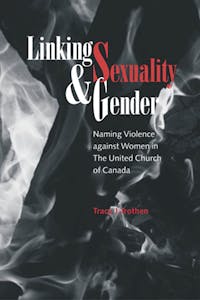Why did it take so long for the United Church of Canada to respond to violence against women?
Tracy J. Trothen looks at the United Church as a uniquely Canadian institution, and explores how it has approached gender and sexuality issues. She argues that how the Church deals with these issues influences its ability to name violence against women.
In examining the Church’s early approaches to gender and sexuality, Tracy J. Trothen discovered that the United Church had tended to see certain structures or roles as sacred and others as demonic. For example, while sex outside marriage was bad or improper, sexual expression within marriage was largely deemed as proper or good, no matter what manifestation it took. This assumption allowed much violence within families and marriages to go unchallenged.
Trothen uncovers significant shifts in this approach through the examination of such issues as redemptive homes, marriage, pornography, abortion, the ordination of women, and family. Then, analyzing three recent case studies, she demonstrates the value of women’s voices in challenging dominant world views. Finally, she suggests how the Church’s approach to human sexuality and gender has facilitated or obstructed the move to address violence against women.
The findings in Linking Sexuality and Gender can be applied to faiths outside the United Church and will be important to anyone interested in church and society, sexuality, gender, or the causal dynamics behind one Canadian institution’s response to violence against women.
Tracy J. Trothen is an assistant professor of systematic theology and ethics, and director of field education at Queen’s Theological College, Queen’s University, Canada. She was ordained in the United Church of Canada. Why did it take so long for the United Church of Canada to respond to violence against women?
